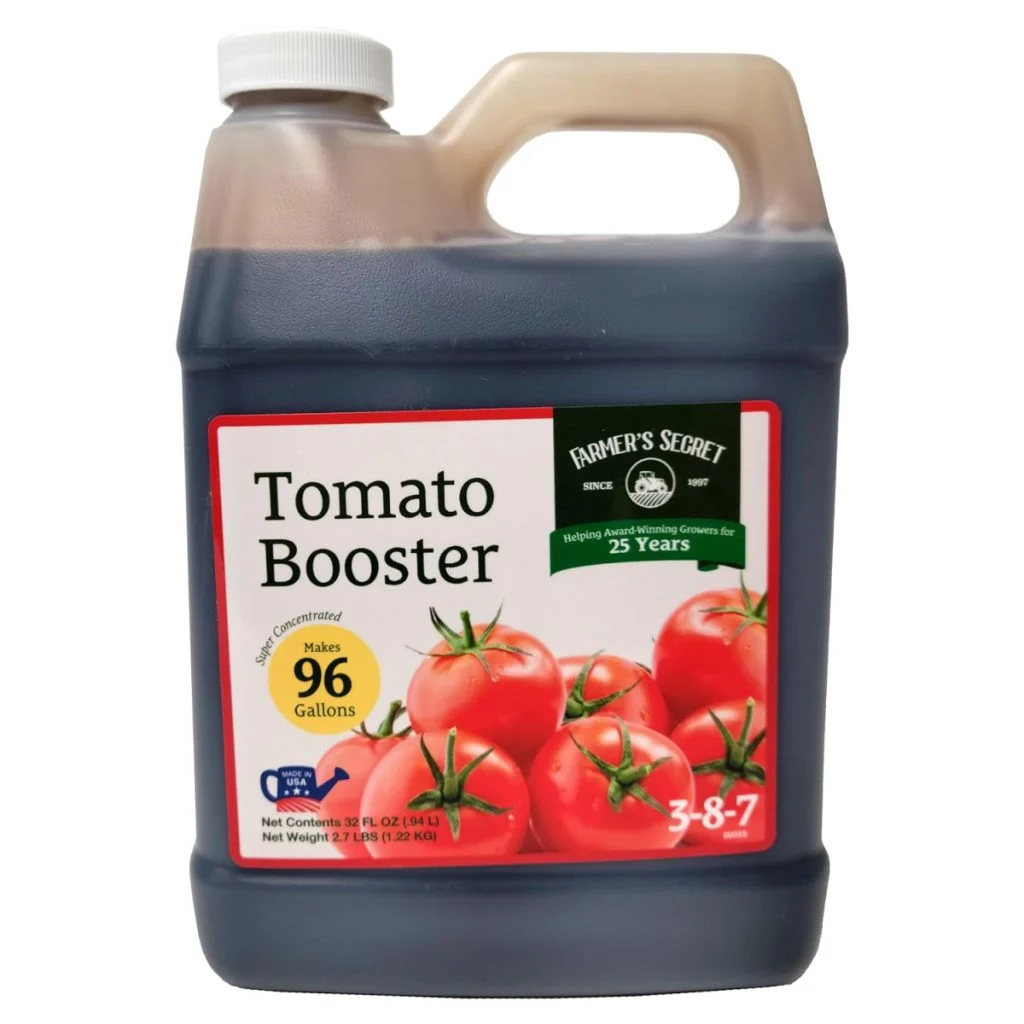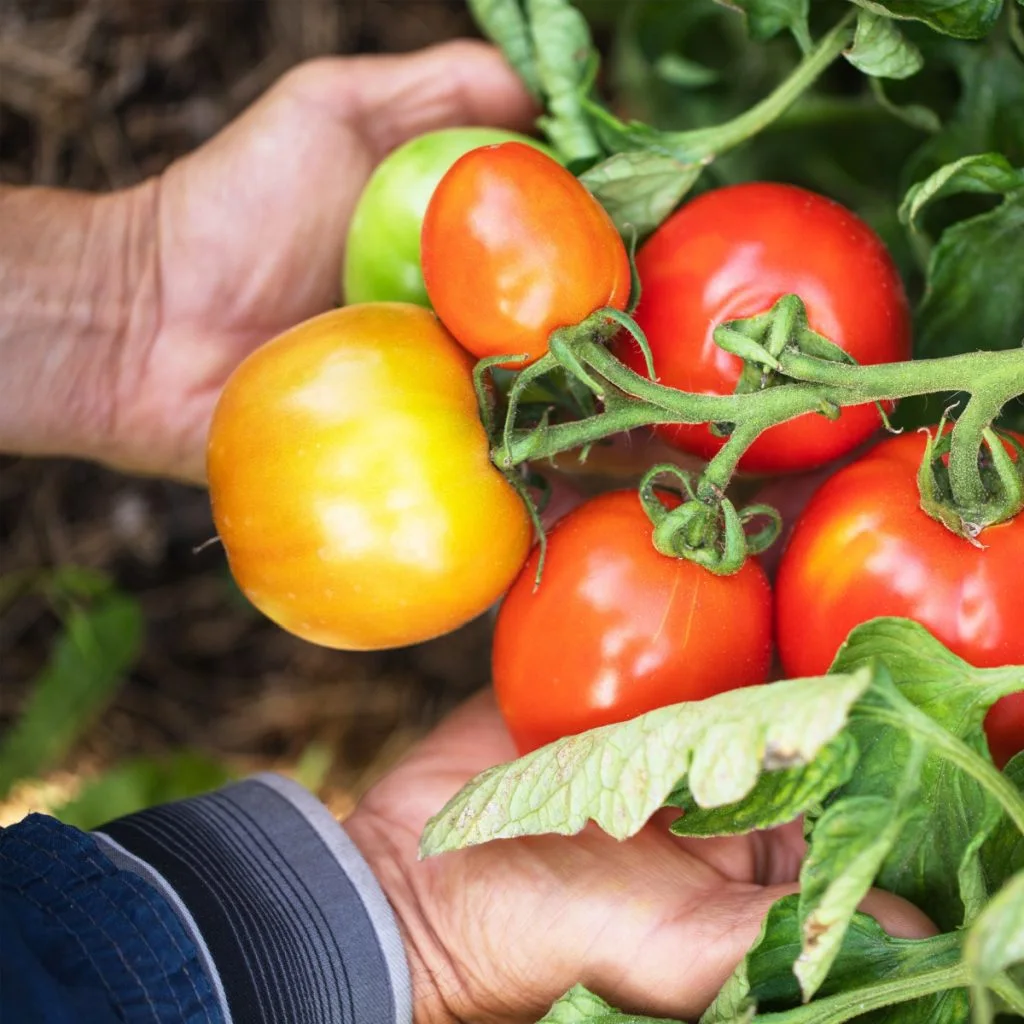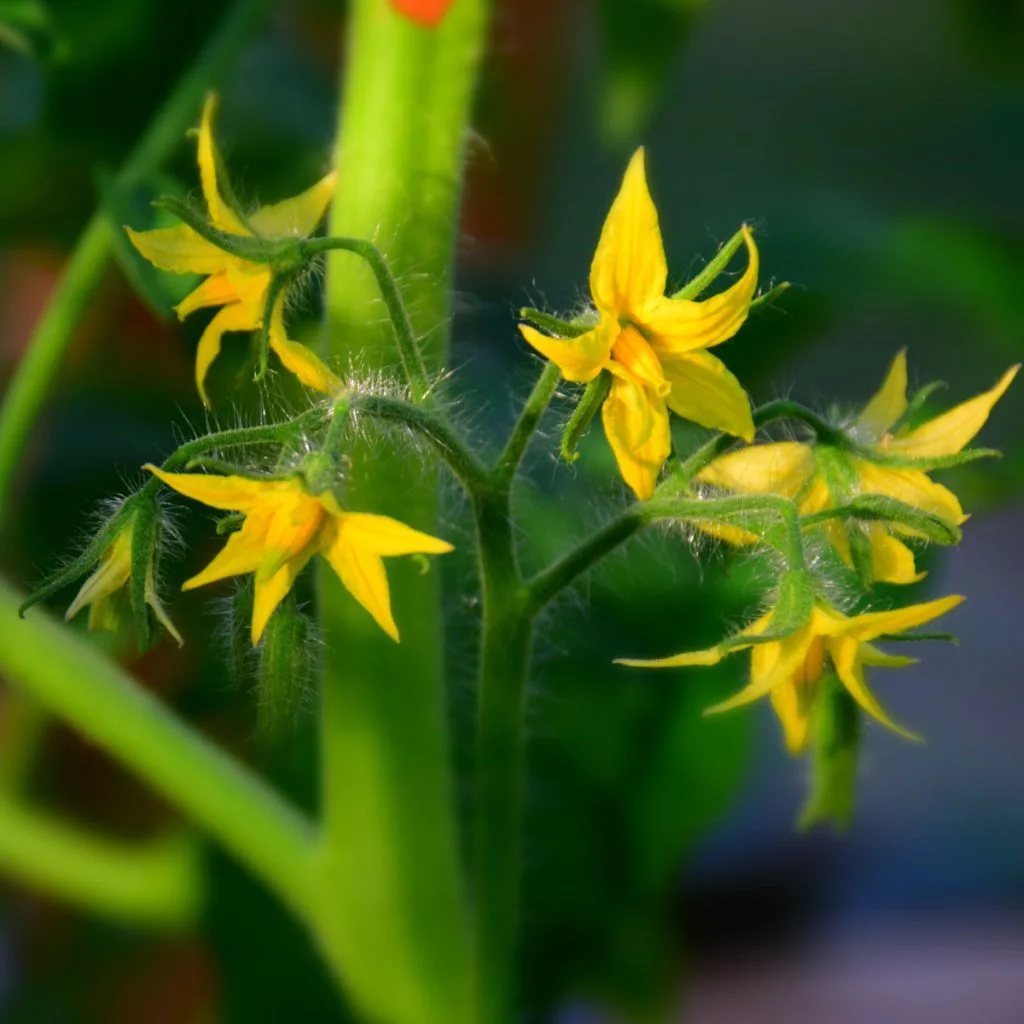Wondering how often you should fertilize the tomato plants you have growing in your garden, raised beds or containers this summer?
When it comes to growing strong, healthy, and productive tomato plants, few things are more important than providing the right nutrients at the right time. In fact, it can be the difference between having a big harvest – or barely any tomatoes at all!
Tomatoes are one of the heaviest feeding vegetable plants of all in the garden. From the moment they begin to grow, they require a steady supply of nutrients to power their roots, stems, leaves, and eventually their blooms and fruit. And without enough energy, plants can easily stall in their growth – or worse, become weak and susceptible to disease and pests.
But while most gardeners know that tomato plants need to be fertilized, one of the biggest struggles comes down to understanding how often to do it – and what kind of fertilizer to use. Especially when feeding plants in the summer.
How Often To Fertilize Tomato Plants In The Summer
If you feed too little, plants can run out of the nutrients they need just when they are trying to flower and produce. Feed too much, or at the wrong strength, and it can lead to poor performance or even damage to the plant.
The good news is that feeding tomato plants doesn’t have to be complicated. In fact, following just two simple secrets can make all the difference in keeping your plants healthy and producing a bumper crop of tomatoes all summer long.
Secret #1 – Fertilize Every 7 To 10 Days With a Weaker Dose
The first secret to fertilizing tomato plants effectively in the summer is to feed them regularly – but in smaller, more diluted doses. Instead of applying fertilizer every few weeks in heavy amounts, a much better method is to fertilize more frequently but at a reduced strength.
The best plan is to give your tomato plants a dose of liquid fertilizer every seven to ten days. This will keep nutrients flowing to the plant without overwhelming it.
Why liquid fertilizer? Because tomato plants absorb nutrients faster and more efficiently when delivered in a liquid form. Unlike granular fertilizers, which take time to break down and release their nutrients into the soil, liquid fertilizers are readily available.
That means the nutrients are absorbed almost immediately by the roots and the leaves of the plant. This rapid dose of power is especially helpful during hot summer weather when plants can experience stress from heat and drying winds. A quick and steady dose of nutrients can help them recover and stay on track.
How To Mix And Apply Liquid Fertilizer
To keep the feeding gentle and effective, it’s best to dilute the fertilizer to half of its recommended strength. Most liquid fertilizers provide instructions based on full-strength feeding. But for tomato plants, they actually respond better to weaker solutions given more often.
For example, if the label recommends using one tablespoon of fertilizer per gallon of water, use only half a tablespoon per gallon instead. This lighter solution reduces the risk of burning roots or creating excess foliage growth. It also allows the plant to take in just the right amount of nutrients it needs to stay strong.
Listen Below To Our Podcast On Fertilizing Tomatoes!
Regular feeding every seven to ten days also helps avoid the typical feast-or-famine cycle that comes with infrequent fertilizing. When plants are fed heavily in one big shot and then not again for weeks, they can grow quickly at first, then hit a wall when nutrients run out.
This can result in blossom drop, stunted fruit, cracked fruit – or yellowing leaves. But with steady feeding, the plant’s nutrient levels stay consistent, promoting balanced growth from top to bottom.
Secret #2: Fertilize Tomato Plants With The Right Nutrients For Blooms & Fruit
The second secret to fertilizing tomato plants successfully has to do with the makeup of the fertilizer itself. Not all fertilizers are created equal, especially when it comes to helping tomato plants bloom and produce fruit.
Many gardeners make the mistake of using fertilizers that are too high in nitrogen. While nitrogen is important for green leafy growth, too much of it causes the plant to grow tall and bushy. All without ever producing very many tomatoes at all.
For tomato plants, the key is using a fertilizer with two to four times more phosphorous and potassium than nitrogen. These two nutrients are what help plants develop strong root systems, create more blooms, and set more fruit.
When tomatoes have access to higher levels of phosphorous and potassium, they shift their energy. They go from growing leaves to forming flowers and, eventually, ripe, juicy tomatoes.

What to Look For On The Label
Most fertilizers list their nutrient content with three numbers representing nitrogen (N), phosphorous (P), and potassium (K). A fertilizer with a ratio near double (like the 3-8-7 fertilizer pictured above) is a great fit for tomato plants because it contains nearly double the phosphorous and potassium than nitrogen. Affiliate Link: Farmer’s Secret Tomato Booster Fertilizer (32oz) – Super Concentrated – 3:8:7 Ratio
These types of formulas help ensure your plants focus their energy on blooming and fruiting instead of just producing more foliage.
When used along with the seven to ten day feeding schedule mentioned earlier, it can make a huge difference. Tomato plants that are fertilized with the right set of nutrients grow better. Even more, they are also more resistant to stress from heat, drought, and even pests.
With a consistent routine and a fertilizer tailored to their needs, tomato plants will reward you back. Not just with better yields, but a longer, more productive growing season too.
Keep Up With Summer Feeding
As tomato plants start to flower and produce, it becomes even more important to maintain the regular feeding schedule. During this stage, the demand for nutrients increases, especially for potassium, which plays a huge role in fruit development.
Skipping feedings during this time can cause the plant to stall out or drop fruit before it fully ripens. It’s just one more reason to stay on track feeding your plants!
Here is to powering your tomatoes to perfection this year. And for more great info on protecting your tomatoes, check out our article: The Easiest Way To Tie Up Tomato Plants – And The Cheapest Too!
Happy Gardening – Jim & Mary
Old World Garden Farms
Jim and Mary Competti have been writing gardening, DIY and recipe articles and books for over 15 years from their 46 acre Ohio farm. The two are frequent speakers on all things gardening and love to travel in their spare time.
As always, feel free to email us at thefarm@owgarden.com with comments, questions, or to simply say hello! You can sign up for our free email list in the subscribe now box in the middle of this article. Follow us on Facebook here : Owg facebook. This article may contain affiliate links.



